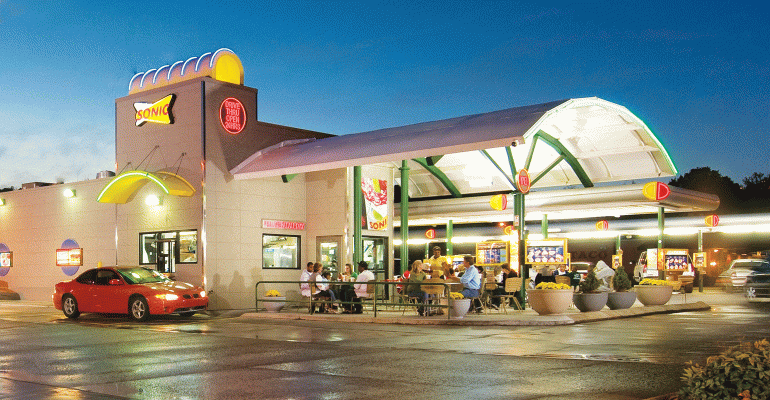Promotions and a strong product pipeline will help Sonic Corp. meet its same-store-sales guidance for the fiscal year despite a 7.4 percent decline in the second quarter ended Feb. 28, executives said Tuesday.
The Oklahoma City-based drive-in operator reported system same-store sales declined 7.4 percent in the quarter, consisting of a 7.3 percent decrease at franchise drive-ins and an 8.9 percent decline at company-owned restaurants.
"Our second quarter results reflect a sluggish consumer environment, weather headwinds and share losses following exceptionally strong performance over the prior two years," said Cliff Hudson, Sonic CEO.
“As we enter the key spring and summer seasons, we believe a better balance of new product news and targeted value will result in sequential improvement in same-store sales and profitability.”
Hudson said in a call with analysts that Sonic was maintaining its projection of same-store sales down 2 percent to flat for the year.
Alexander Slagle, an analyst with Jeffries LLC, said in a note that Sonic executives indicated “underlying trends improved since mid-February into March, even during certain weeks when the comparisons were still particularly difficult.” Slagle added that the commentary suggested better sales comparisons in the second half of the fiscal year.
Hudson said the competitive environment was “very intense” in the second quarter, with food deflation driving a high level of promotional activity. The food deflation should diminish as the calendar year progresses, he added.
The CEO said Sonic’s marketing will focus on differentiated products.
“As we enter this spring and summer months, which are so important to our business because of higher volumes, our marketing approach look more like a typical Sonic playbook with strong premium innovation and periodic value offerings with both with new product news and core menu items,” he said.
Along with Sonic’s iconic Cherry Limeade, Sonic will focus on fruit slushes and blended products like Cream Slush, he said.
Sonic plans to introduce a new smartphone app in early summer that integrates various aspects of its new point-of-sale and other systems. The app will include mobile order and mobile pay, he said.
He noted that 15 years ago, only 5 percent of Sonic’s sales came through credit cards, and that has grown to 55 percent to 60 percent of sales.
“My view is we are going to provide a different experience for the customer versus our competition trying to use the same tool,” Hudson said, adding that it will give Sonic an advantage over other quick-service restaurants. “We will provide a different experience, more personalized experienced and we will get more information about them to able to be market them in a way our QSR competition will have difficult time matching.”
Net income was up 1.3 percent to nearly $11 million, or 25 cents a share, from $10.8 million, or 22 cents a share, in the prior-year quarter. Revenues were down 24.8 percent to $100.2 million from $133.2 million in the same quarter last year, reflecting refranchising.
The company opened 10 new drive-ins in the second quarter and refranchised 54 units.
Sonic has more than 3,500 drive-ins nationally.
Contact Ron Ruggless at [email protected]
Follow him on Twitter: @RonRuggless





